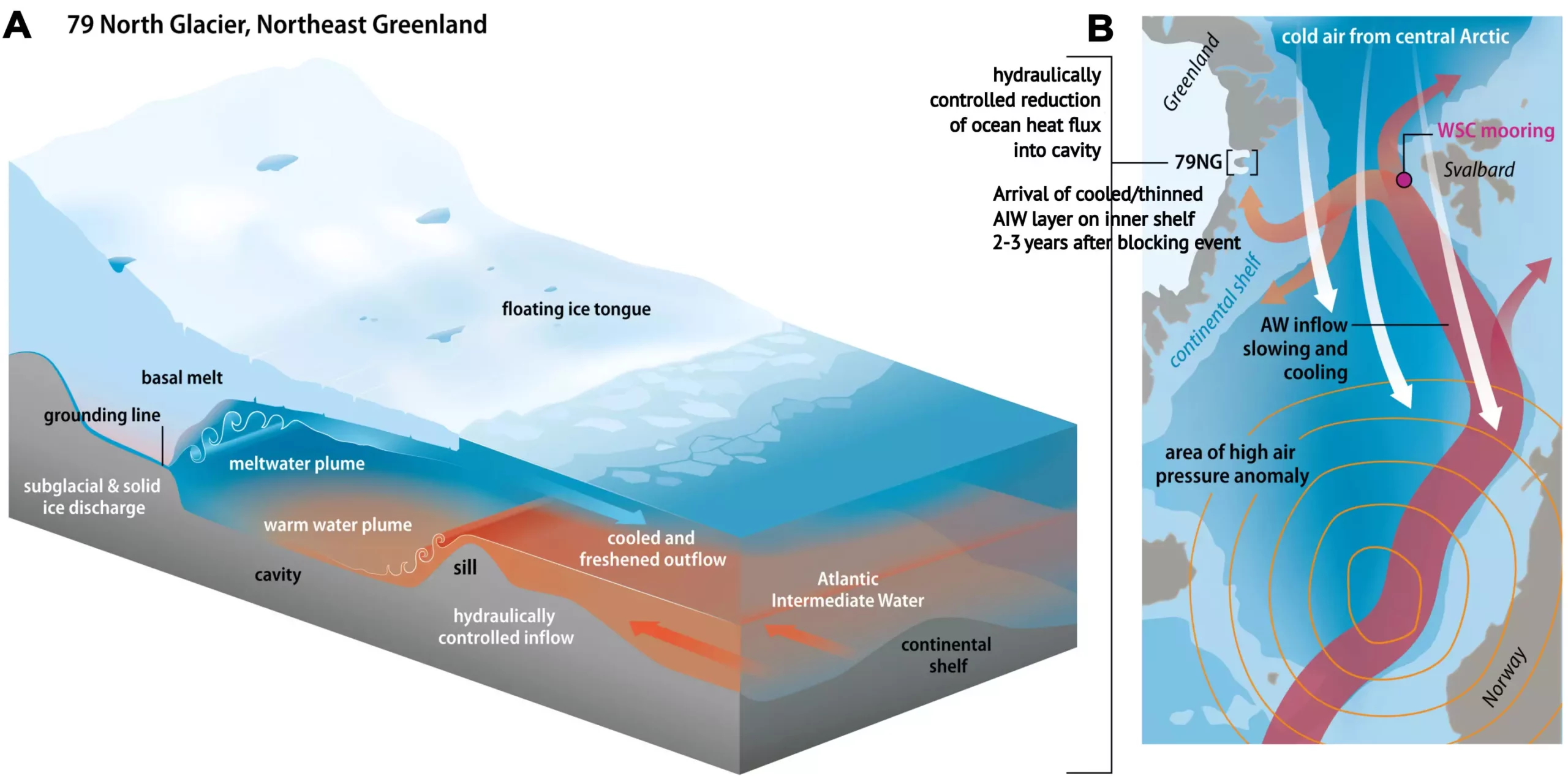The 79° N Glacier, located in Northeast Greenland, stands as the largest floating glacier tongue in the country and a sentinel of climate change’s immediate impacts. This expansive ice mass is not just an iconic geographical feature but also a crucial element in understanding the broader implications of global warming. As temperatures rise, particularly in our oceans, the 79° N Glacier faces a significant threat—melting from below, primarily caused by warm Atlantic waters infiltrating its lower layers. Nevertheless, new research from the Alfred Wegener Institute (AWI) reveals an unexpected twist: between 2018 and 2021, the water temperature around the glacier experienced a notable decline, despite long-term regional warming trends. Understanding this phenomenon could shed light on the glacier’s future and the potential ramifications for global sea levels.
The dynamics surrounding the 79° N Glacier underscore the complexities of climate systems. While general trends indicate an alarming increase in temperature, the AWI’s research reveals a cooling phase, indicating that underlying factors must be examined. Notably, Dr. Rebecca McPherson, a researcher at AWI, emphasizes how this unexpected cooling—attributable to alterations in atmospheric circulation—can lead to a significantly slower melt rate for the glacier. This divergence from expected outcomes highlights the critical need for scientists to monitor and interpret climatic shifts continuously. The nuanced interactions between atmospheric conditions and ocean temperatures necessitate a comprehensive understanding of oceanographic trends to further explain this cooling period.
The study delineates that, while the overarching trend points to warming oceans, specific situations like atmospheric blocking can inadvertently result in localized cooling periods. In essence, stationary high-pressure systems in the atmosphere can redirect dominant air currents, altering how cold air from the Arctic flows into surrounding ocean areas like the Fram Strait and the Norwegian Sea. Data from 2016 to 2021 illustrate that sea temperatures hit a peak in December 2017 but subsequently dropped. These fluctuations were traced back to altered ocean currents and atmospheric conditions that locally affected the glacier’s hydrology. The intricacies of oceanography are critical to understanding how weather can influence ice melt rates over time.
The potential ramifications of glacier melt extend far beyond the Arctic. The Northeast Greenland Ice Stream, for instance, poses a sea-level rise risk of up to one meter if melted entirely. With the looming threat of sea-level rise, researchers recognize that actions in one area can have ripple effects globally. The links between local environmental changes at the 79° N Glacier and worldwide implications for coastal populations underscore the urgent need for comprehensive climate science. As glacier melt accelerates, it accelerates mean sea-level rise, posing severe challenges for vulnerable communities around the world.
Researchers predict that understanding temperature variations within the 79° N Glacier will become increasingly important in refining forecasts for future sea-level rise. The scientific community is set to continue extensive research, including a planned return to the glacier aboard the research vessel Polarstern in the summer of 2025. The anticipation surrounding new data collection is heightened by the current upward trend in water temperatures in the Fram Strait, raising concerns about the glacier’s melting patterns. It’s crucial, as McPherson indicates, to understand more about the glacier’s behavior to draw accurate predictions about its fate.
The rapidly changing climate poses challenges that affect not only local environments but also global ecosystems. The study of the 79° N Glacier serves as a case study in how interconnected these processes are. While the current phase shows a temporary relief from temperatures that promote melting, climate models indicate that warmer trends are likely to resume. Increased attention to atmospheric changes and their subsequent effects on ocean currents could provide vital insights for scientists attempting to understand what lies ahead for the glaciers of Northeast Greenland. As researchers navigate through this complicated web of influences, one thing becomes increasingly clear: the fate of the 79° N Glacier could significantly shape our understanding of rising sea levels and the planet’s future.


Leave a Reply